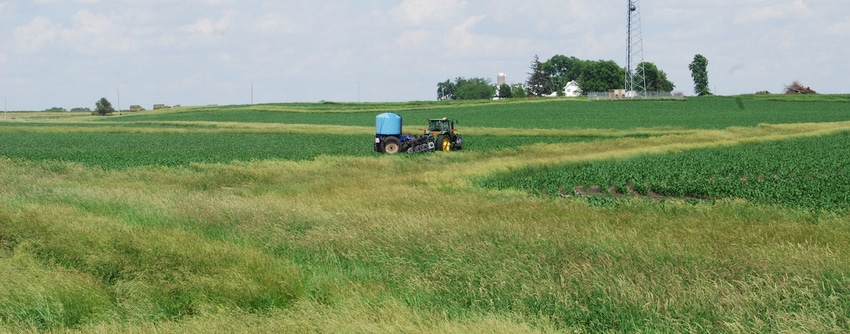
The loss of climax forage biomass on farms and ranches historically preceded the loss of soil quality, followed closely by the loss of profitability.
The confusing factor that commonly occurs is that initially with the decrease in high-succession plants there are production increases. But this doesn’t happen for long and then there is often a crash.
Remember that climax warm season (C4) growth in interaction with the large herbivores and millions of other macro and micro living components was the major soil builder before the civilization processes came along. We now have information and abilities to repeat the growth process with more speed and chaos than was previously thought possible. Building soil quantity, quality and health can add more profitability, stability, and life quality than can likely be imagined.
An important key to the rebuilding process is high-biomass, quality tall C4 climax forages growing in diverse stands with dozens of other grasses, legumes, forbs and brush. I define climax forage as nonpoisonous, high-energy, warm-season plants that are present in large amounts in the pasture or range as it progresses into its most productive times.
In most environments, climax forages (also called high-seral forages) are perennial warm season plants and are most often native to the area. In far northern climates, there may be some C3 plants that are considered to be climax forages, but C4 plants have an additional carbon chain as compared to cool-season C3 plants. C4 plants have four carbon chains in their structure and are higher in cell wall starch, which is the better and healthier energy source for ruminants and large-bowel digesters like horses and elephants.
Well-mineralized C4 plants that are in the boot stage of seed development can fatten cattle quickly. It’s a work of art when the stage is set up right.
In my opinion, forage plants that have the ability to make high production and build new soil must be deep-rooted and produce large amounts of biomass that is well mineralized and high in energy. High-energy plants result in at least three major areas of soil building when grazed at high animal densities following complete plant recovery.
1. Soil surface has large amounts of quality litter, urine, manure, moisture and hoof impact.
2. Die-back of parts of the root mass results in the release of root acids and compounds, bug food, future rodent food, and increase in water cycling and infiltration.
3. Increased organic matter to the soil shortly becomes high-energy, mineralized humus.
Microbial and bug activity follows shortly behind the cattle and the rodent activity comes under fire from predators. Birds are having a ball, followed shortly by predators who are followed in a few weeks by wild browsers.
We are of the belief that a major key to animal health is plant diversity. Plant diversity is also a major player in moving soil into a building phase. 65% of organic matter is carbon. It takes a lot of carbon to build a lot of organic matter. Organic matter in the form of new soil humus is health and wealth. Properly recovered and grazed warm-season, tall climax plants are the fast driver.
The take-home message is to learn how and execute for a large increase in tall climax forage if you have mostly short and medium cool season pasture. It will make you money.
About the Author(s)
You May Also Like






